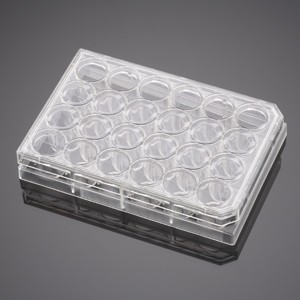The time I solved a tricky lab problem with Google and Vaseline
Yup, scientists use search engines, too
I had been trying in vain for months to get a new experiment to work. It was 2013, and I was a PhD student researching a type of brain cancer – or trying to, anyway. But I couldn't get an experiment designed to test a cancer cell's invasive abilities to work. Scientists often call this process of creating methods “optimization,” which gives the impression that only a few tweaks are necessary to smooth out a process. But in reality optimization can be as frustrating as slaving away in the kitchen only to have the cakes come out of the oven flat.
I had spent a couple of months trying to find the best setup for my invasion experiment. The premise was to measure how far cells placed on top of a jelly-like substance meant to mimic brain tissue were able to “invade” in a set amount of time. I could then test what would make the cells less invasive, all with the aim to prevent the spread of brain cancer.
I needed to keep the cell’s invasion race fair and accurate, but I was having a problem with a wobbly starting line: the jelly wasn’t setting flat. It was curved, like the surface of a drink in a glass. This is a phenomenon known as the meniscus, caused by the liquid being attracted to the glass and creeping up at the edges.
In my centimeter-wide jelly molds, this meant that each cellular contestant was starting the race at a different starting point, a serious flaw in the experiment. I glumly reported my lack of progress in lab meetings, but no solution came to mind, although my boss seemed determined that I keep at it.

Invasion chamber molds like the ones used by the author
I didn’t know where to look next – a Google search just returned a lot of ways to fix a torn knee meniscus – so I grudgingly decided to read back through an instructional technical paper that described different variations of my invasion experiment, to see if I could glean anything useful. It felt like I had gone back to square one. Then, an obscure reference to paraffin caught my attention.
Paraffin, a derivative of petroleum traditionally used to fuel lamps, had been previously used to coat the sides of molds, and the paper seemed to say that that would prevent meniscus formation. I embarked on a feverish search to find some paraffin.
I couldn't find any in the lab and was on the cusp of ordering some when health and safety restrictions intervened - I was not allowed to use highly flammable paraffin in the lab.
The next day I went into yet another lab meeting to rant about yet another dead end, when a colleague mused that paraffin probably works because of its hydrophobic – or water-repellant – properties. It counters the meniscus effect by opposing the attraction the jelly (with a high water content) has to the sides of the mold.

The author's stash of Vaseline
Louisa Cockbill
I felt a bit stupid I hadn’t known this (although also unsure why I would ever have known what felt like a seemingly random fact). But I was hopeful that I could find another hydrophobic substance to apply to the edges of my molds.
My next Google search revealed that petroleum jelly is a form of soft paraffin. In a word: Vaseline, just like the tub I keep in my handbag to soothe chapped lips, and easily available at every pharmacy. I ran and bought a fresh batch, heated it, dipped in a Q-tip, and applied a thin coating around the sides of a well. The liquid jelly was added and quickly solidified, flat as a pancake.
I love lab days where everything goes perfectly – and oh, those days where a data set comes together and shows significance! However, none of those were comparable to the satisfaction of finding an easy, everyday answer to a problem that had felt insurmountable.
The experiment went on to fail, but for entirely different reasons. I’m putting it politely when I say that research is “challenging.” It's rare that solutions are as close to hand as Vaseline was in my favorite lab day ever.